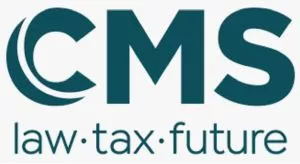Background
The European Securities and Markets Authority (ESMA) has published its final report (the Report) providing detailed technical advice to the European Commission (the Commission) on the review of the UCITS Eligible Assets Directive (the Directive). Since the first adoption of Council Directive 85/611/EEC (i.e. the original UCITS Directive), UCITS have evolved to meet changing market conditions and investment practices. In light of significant market developments, new financial products, and the emergence of alternative asset classes, the Commission mandated ESMA to assess whether the Directive still ensures a consistent and robust investor protection framework while preserving the renowned UCITS label.
In preparing its Report, ESMA engaged in a wide-ranging survey of national competent authorities and conducted a public Call for Evidence, receiving valuable feedback from asset managers, investor associations, law firms, and other stakeholders. This collaborative process enabled ESMA to identify major divergences in national practices, assess the impact of modern investment strategies on UCITS, and propose policy solutions to promote supervisory convergence and safeguard investor interests.
Key Elements of the Final Report
The Report highlights the importance of clarity, consistency, and investor protection across various dimensions:
- Look-through approach in determining eligibility and 10% limit for indirect UCITS exposures to alternative assets: ESMA recommends a targeted look-through approach that ensures UCITS do not build significant indirect exposures to alternative asset classes, such as commodities or crypto-assets, via instruments like delta-one products or indices. A 10% threshold would be introduced for permissible indirect holdings of ineligible assets, with appropriate transitional timelines.
- No expansion of the list of eligible assets: ESMA highlights that the Directive (Level 2) cannot expand the list of eligible assets set out in the Level 1 UCITS Directive by explicitly referring to specific asset classes. ESMA also refrained from putting forward policy proposals for large-scale Level 1 changes regarding any possible expansion or restriction of the list of directly eligible asset classes. Such an expansion would require careful assessment in a separate future workstream.
- Refinements to the definition of transferable securities: The Report suggests aligning certain UCITS definitions with MiFID II while clarifying criteria such as "adequate liquidity," "reliable valuation," and "freely negotiable." ESMA also proposes removing uncertainties around the requirement that a UCITS' risk management process must adequately capture potential exposures of each underlying asset.
- Money market instruments: To address issues of possible reclassification of some securities as money market instruments, the Report recommends clarifying that the final classification should not result solely from an instrument's residual maturity but should also consider liquidity, interest rate, and credit risk factors.
- Financial derivatives: The Report provides further clarity on the eligibility of financial derivative instruments, confirming that UCITS may gain exposure to derivatives either directly or through transferable securities embedding a derivative, provided all relevant eligibility criteria are met. The Report also addresses the definition of embedded derivatives, suggesting the use of clear criteria and non-exhaustive lists to aid classification, and highlights the importance of ongoing risk assessment, valuation, and transparency.
- Financial indices: Indices used must be sufficiently diversified, and UCITS-specific requirements on diversification and investor protection remain essential alongside the Benchmark Regulation. The Report also calls for harmonisation of national practices and possible legislative amendments for consistency.
- Investments in AIFs: ESMA proposes clearer rules distinguishing open-ended from closed-ended AIFs, ensuring an equivalent level of regulatory supervision and investor protection is maintained. The Report also confirms that AIF units do not constitute transferable securities unless they are capable of meeting UCITS criteria when classified as closed-ended and listed.
- Short positions: While ESMA acknowledges that short positions may expose UCITS to additional risks, it believes these risks should be carefully considered in UCITS management companies' operational and risk management processes, in line with CESR guidelines. Additionally, ESMA emphasises the importance of providing investors with adequate disclosures, including information on whether the UCITS intends to take long or short positions and the associated risks.
- Efficient portfolio management (EPM): While acknowledging the usefulness of EPM techniques such as securities lending, the Report flags the need for tighter enforcement of cost and fee structures so that net revenues truly benefit the UCITS, rather than the manager or third parties. ESMA advises a future review of the guidelines, particularly on revenue splits and collateral arrangements.
- Ancillary liquid assets: ESMA clarifies that, while UCITS may hold ancillary liquid assets to meet liquidity needs, such holdings should be limited to what is strictly necessary and subject to existing counterparty risk limits. The Report does not propose a fixed cap but emphasises that these assets must be readily available and held only for as long as required to address exceptional payments or adverse market conditions.
- Investments in foreign currencies: ESMA clarifies that UCITS may hold foreign currencies as ancillary liquid assets to meet liquidity needs and may also invest in foreign currencies for investment purposes, provided that such exposures fall within the categories of deposits, are underlying for financial derivative instruments, or qualify as ancillary liquid assets or EPM techniques. ESMA does not propose amendments to the Directive in this respect but emphasises that all exposures to foreign currencies must be properly managed and disclosed.
- Securitisations: Some stakeholders support easing due diligence and other regulatory requirements under the Securitisation Regulation, including removing the 10% concentration limit, on grounds that securitisations already provide diverse credit risk. Others favour more stringent measures, such as mandatory listing and limiting UCITS investments to simple, transparent, and standardised instruments. ESMA proposes no relaxation of these rules, stressing investor protection and asserting that only the Securitisation Regulation's provisions should apply.
- Greater harmonisation across EU law: The Report highlights the need for consistent terminology and cross-references when dealing with MiFID II, the DLT Pilot Regime, and MiCA. It also points out national discretions causing uneven supervision and suggests that a directly applicable regulation, rather than minimum-harmonisation directives, may help reduce complexity in the future.
Next Steps
ESMA's technical advice will be formally considered by the Commission as it contemplates revisions to the Directive and potentially the Level 1 UCITS Directive itself. ESMA underscores the importance of granting sufficient transitional periods for any major policy changes, particularly on limiting indirect exposures to illiquid or alternative assets. In parallel, the Commission may further harmonise rules governing AIF distribution to retail investors or examine expanding the list of eligible asset classes for UCITS, subject to careful calibration of risk management, valuation, and disclosure requirements.
The Council of the EU and the European Parliament will scrutinise the Commission's proposal and, through trilogue negotiations, agree on a political text. Eventually, this text will be published in the Official Journal.
In the meantime, asset managers are encouraged to assess the potential impacts of ESMA's recommendations – especially with respect to current indirect holdings of alternative assets and any ongoing reliance on EPM techniques. Once proposals are finalised, market participants will benefit from clearer harmonised standards, strengthening the UCITS brand and further safeguarding investor interests throughout the EU.
The content of this article is intended to provide a general guide to the subject matter. Specialist advice should be sought about your specific circumstances.




